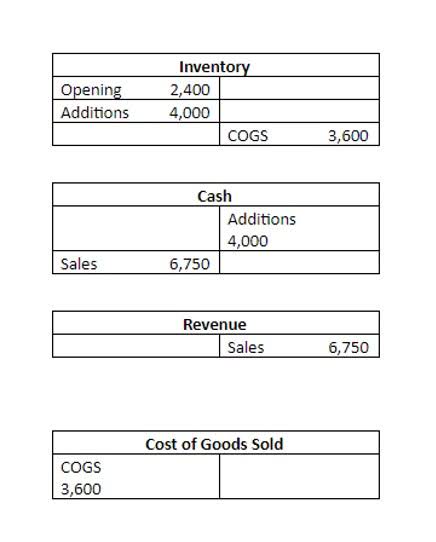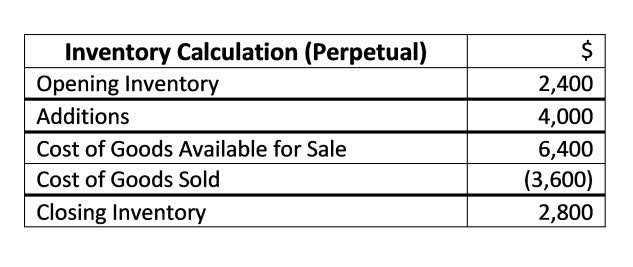
This concept helps the company to know where its assets (high level) come from and monitor its balance in the business. This is important as some companies may not be able to survive in the long term if their assets are mainly from liabilities while their equity is too small in comparison. This is how the accounting equation of Laura’s business looks like after incorporating the effects of all transactions at the end of month 1. In this example, we will see how this accounting equation will transform once we consider the effects of transactions from the first month of Laura’s business. If you’re still unsure why the accounting equation just has to balance, the following example shows how the accounting equation remains in balance even after the effects of several transactions are accounted for.

D. Double Entry Accounting System

To learn more about the balance sheet, see our Balance Sheet Outline. For the past 52 years, Harold Averkamp (CPA, MBA) has worked as an accounting supervisor, manager, consultant, university instructor, and innovator in teaching accounting online. My Accounting Course is a world-class educational resource developed by experts to simplify accounting, finance, & investment analysis topics, so students and professionals can learn and propel their careers. Nabil invests $10,000 cash in Apple in exchange for $10,000 of common stock. Shareholders’ equity comes from corporations dividing their ownership into stock shares.
Relationship between balance sheet items
Accounting software is a double-entry accounting system automatically generating the trial balance. The trial balance includes columns with total debit and total credit transactions fundamental accounting equation at the bottom of the report. To calculate the accounting equation, we first need to work out the amounts of each asset, liability, and equity in Laura’s business.
What is the accounting formula?
- This business transaction increases company cash and increases equity by the same amount.
- The claims to the assets owned by a business entity are primarily divided into two types – the claims of creditors and the claims of owner of the business.
- So, as long as you account for everything correctly, the accounting equation will always balance no matter how many transactions are involved.
- In this case, the owner’s equity will be replaced with the elements that make it up.
- As business transactions take place, the values of the elements in the accounting equation change.
This straightforward relationship between assets, liabilities, and equity is considered to be the foundation of the double-entry accounting system. The accounting equation ensures that the balance sheet remains balanced. That is, each entry made on the debit side has a corresponding entry (or coverage) on the credit side. The fundamental accounting equation is debatably the foundation of all accounting, specifically the double-entry accounting system and the balance sheet. Double-entry accounting is the concept that every transaction will affect both sides of the accounting equation equally, and the equation will stay balanced at all times. Double-entry accounting is used for journal entries of any kind.

- A credit in contrast refers to a decrease in an asset or an increase in a liability or shareholders’ equity.
- The accounting equation is also called the basic accounting equation or the balance sheet equation.
- The total dollar amounts of two sides of accounting equation are always equal because they represent two different views of the same thing.
- The accounting method under which revenues are recognized on the income statement when they are earned (rather than when the cash is received).
The accounting equation equates a company’s assets to its liabilities and equity. This shows all company assets are acquired by either debt or equity financing. For example, when a company is started, its assets are first purchased with either cash the company received from loans or cash the company received from investors. Thus, all of the company’s assets stem from either creditors or investors i.e. liabilities and equity. The income and retained earnings of the accounting equation is also an essential component in computing, understanding, and analyzing a firm’s income statement.
- If the total assets calculated equals the sum of liabilities and equity then an organization has correctly gauged the value of all three key components.
- In this sense, the liabilities are considered more current than the equity.
- It is based on the idea that each transaction has an equal effect.
- It is used to transfer totals from books of prime entry into the nominal ledger.
- Double-entry accounting is a system where every transaction affects at least two accounts.
- Cash (asset) will reduce by $10 due to Anushka using the cash belonging to the business to pay for her own personal expense.

Balance sheet is the financial statement that involves all aspects of the accounting equation namely, assets, liabilities and equity. A balance sheet provides accurate information regarding an organization’s financial position at a specific point related to its reporting period. In above example, we have observed the impact of twelve different transactions on accounting equation.
Shareholders’ Equity
Because there are two or more accounts affected by every transaction, the accounting system is referred to as the double-entry accounting or bookkeeping system. Income and expenses relate to the entity’s financial performance. Individual transactions which result in income and expenses being recorded will ultimately result in a profit or loss for the period. The term capital includes the capital introduced by the business owner plus or minus any profits or losses made by the business. Profits retained in the business will increase capital and losses will decrease capital.
If the equation is balanced then the financial statement can be prepared. As expected, the sum of liabilities and equity is equal to $9350, matching the total value of assets. So, as long as you account for everything correctly, the accounting equation will always balance no matter how many transactions are involved.

Want More Helpful Articles About Running a Business?
The accounting equation is also called the basic accounting equation or the balance sheet equation. Short and long-term debts, which fall under liabilities, will always be paid first. The remainder of the liquidated assets will be used to pay off parts of shareholder’s equity until no funds are remaining. Any discrepancies between recorded assets and the sum of equity and liabilities signal an anomaly and a need for corrections in account balances. The brilliance of the double-entry system lies in its self-balancing mechanism, acting as a check-and-balance system to reduce errors and uphold financial data integrity. Double entry system ensures accuracy and completeness in its accounting system.
